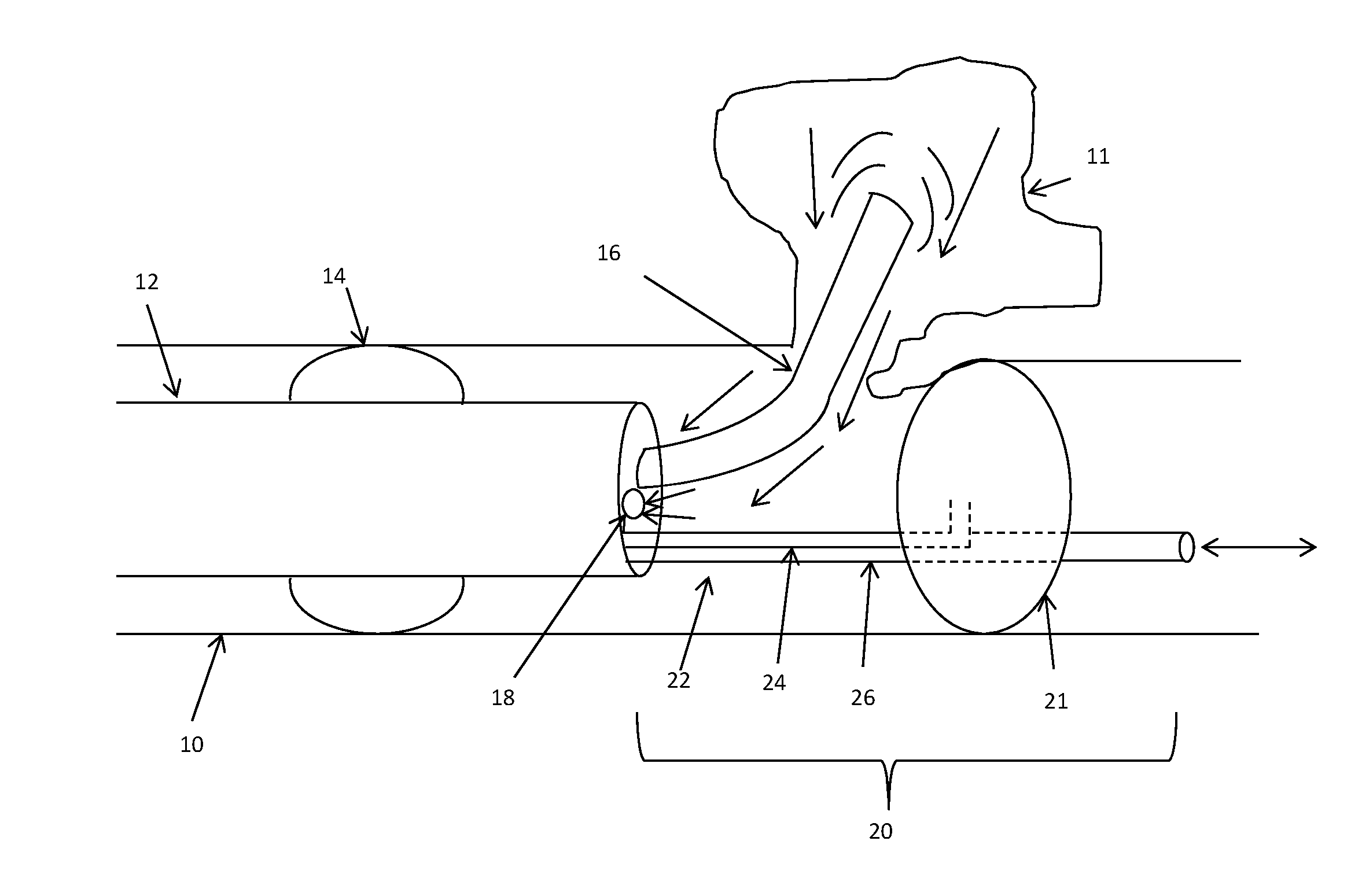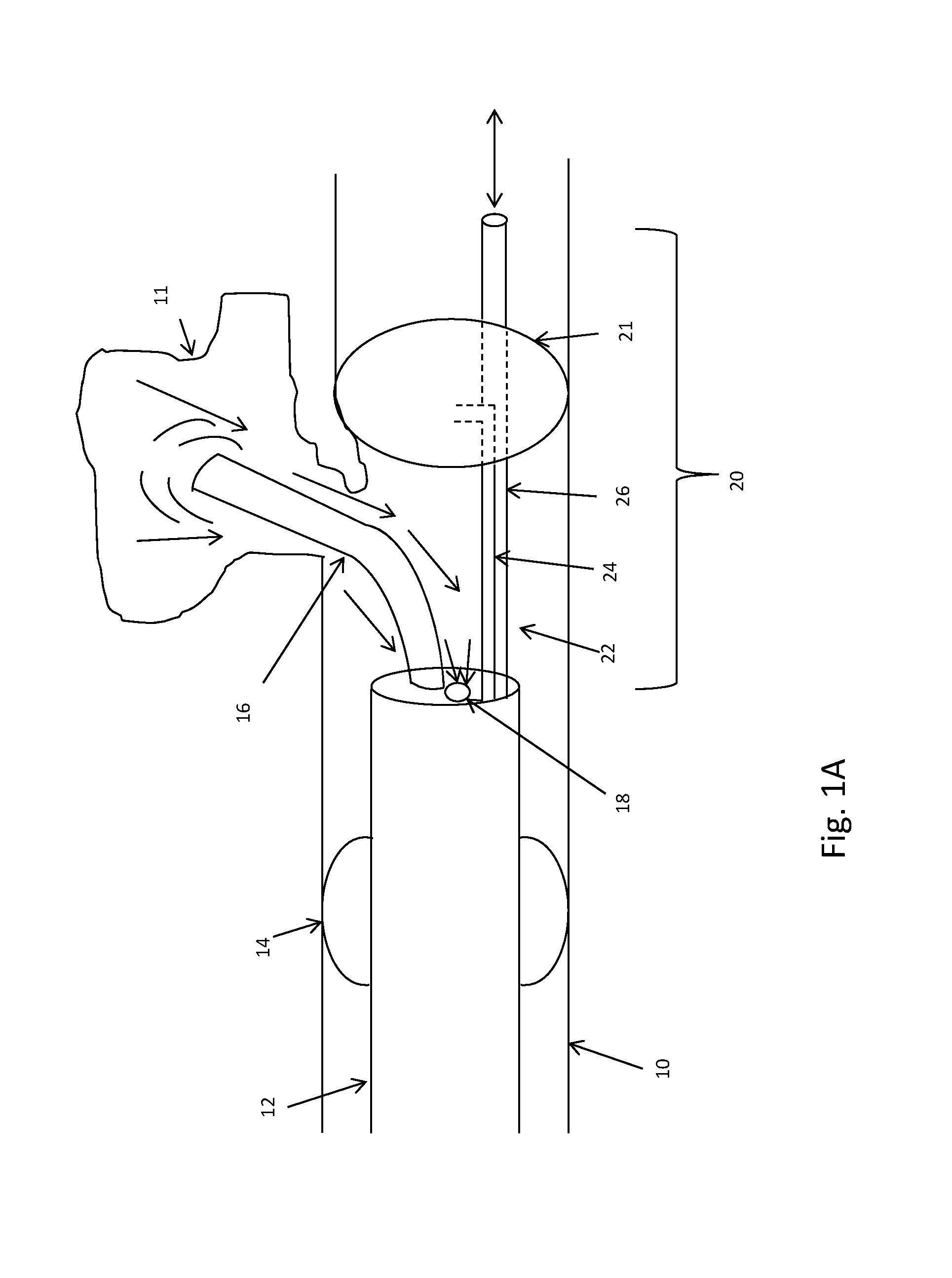System and method for treating COPD and emphysema
a technology of emphysema and system, applied in the field of system and method of treatment of chronic obstructive pulmonary disorder, can solve the problems of poor airflow that results from emphysema, fewer and larger air sacs than many tiny ones, and fewer and larger air sacs. , to achieve the effect of increasing the volume of the chest cavity, reducing the volume, and increasing the ventilation
- Summary
- Abstract
- Description
- Claims
- Application Information
AI Technical Summary
Benefits of technology
Problems solved by technology
Method used
Image
Examples
Embodiment Construction
[0030]The present disclosure is directed, in part, to the treatment of COPD both emphysema and chronic bronchitis through the use of microwave ablation techniques. Placement of the microwave ablation probes is enabled through the use of an Electromagnetic Navigation (EMN) System. By ablating tissue of the lungs afflicted by emphysema or chronic bronchitis the tissue that had previously been ineffectively exchanging gas due to its loss of elasticity, destroyed alveoli walls, mucus and other contaminants creating a barrier, and other issues, is necrosed causing the tissue to retract and shrink. The shrinkage forces the air which was previously trapped in the damaged alveoli to be expelled and prevents new air from entering that space. Additionally the overall shrinkage allows portions of the lungs which are operating more effectively to expand into the newly available area and provide for greater amounts of gas exchange. This increases the ventilation (V) (volume of air reaching the a...
PUM
 Login to View More
Login to View More Abstract
Description
Claims
Application Information
 Login to View More
Login to View More - R&D
- Intellectual Property
- Life Sciences
- Materials
- Tech Scout
- Unparalleled Data Quality
- Higher Quality Content
- 60% Fewer Hallucinations
Browse by: Latest US Patents, China's latest patents, Technical Efficacy Thesaurus, Application Domain, Technology Topic, Popular Technical Reports.
© 2025 PatSnap. All rights reserved.Legal|Privacy policy|Modern Slavery Act Transparency Statement|Sitemap|About US| Contact US: help@patsnap.com



